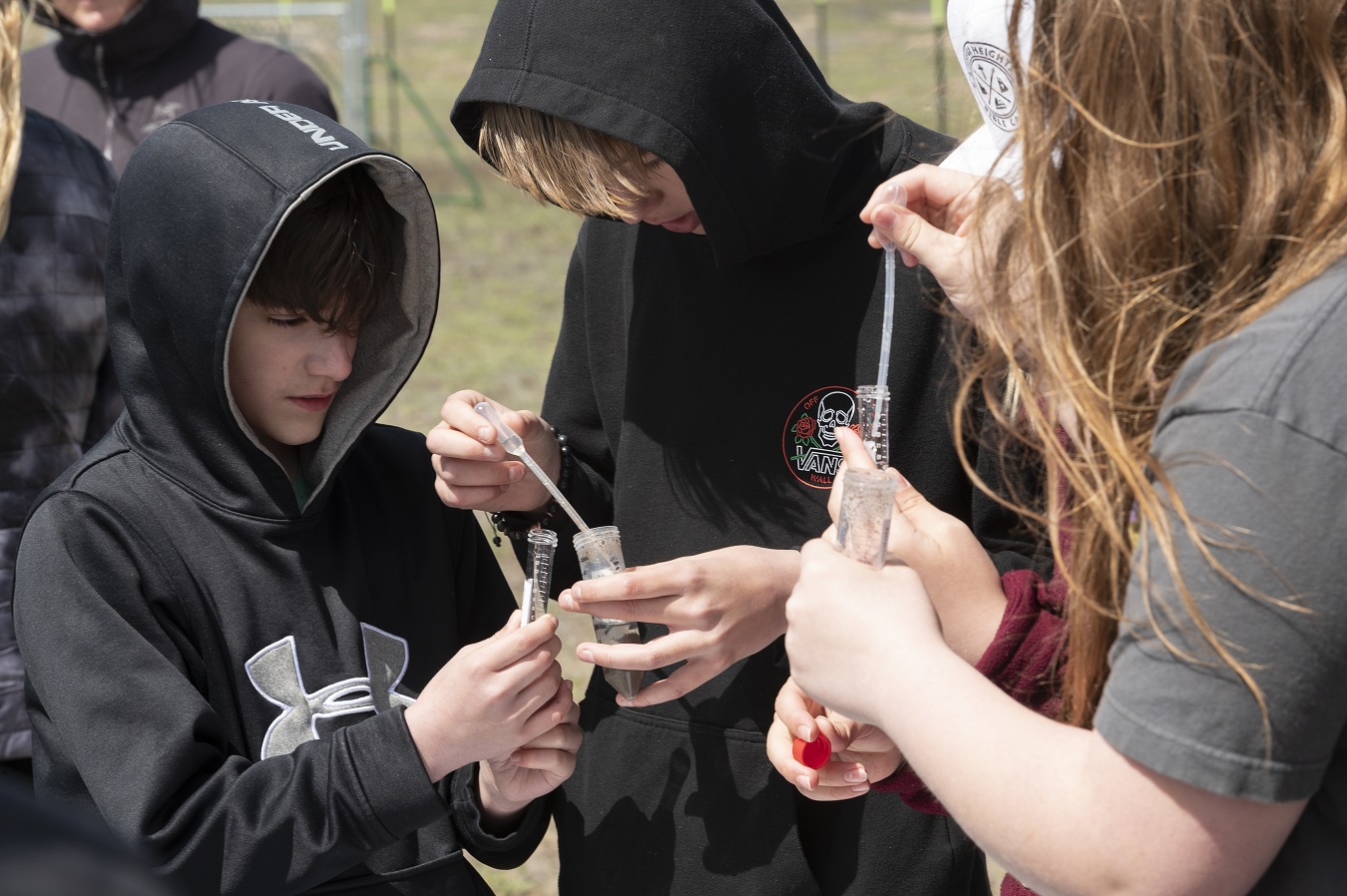
The event is in alignment with GEM3 research and Idaho NSF EPSCoR’s statewide STEM related goals designed to strengthen research and education capacity by promoting public, stakeholder, and student awareness and interest in EPSCoR research.
The event included alignment of EPSCoR research with the ecology curriculum of Heritage Middle School, a local Boise area school. The collaborative effort was supported by Idaho NSF EPSCoR, the Idaho Army National Guard, the Bureau of Land Management, the Idaho Rangeland Resource Commission, 4-H Americorps, Boise State University, and Heritage Middle School.
The event was led by Zoe Duran, Natural Resources Specialist with the Idaho Army National Guard and former EPSCoR undergraduate mentor, and Jen Forbey, NSF EPSCoR projects lead and professor in Boise State's Department of Biological Sciences.
The event was aimed at inspiring the next generation of scientists by providing experiential learning activities that help students understand what the ecosystem is made of, to value it, and understand why it matters. Participating teachers had also previously taken part in a Boise State University class, “Science and Society,” led by Idaho faculty. The teacher training was designed to provide a way to increase recruitment in STEM fields and to create greater opportunities for teachers to provide student-led discovery in and out of the classroom.
In April 2022, Idaho researchers hosted an Adopt-a-Scientist event for over one hundred 7th grade students in Boise, Idaho’s Treasure Valley with the theme of “seeing the landscape through different lenses.” The STEM stations included the “Below Ground Lens” by engaging students in biochar seedling experiments; the “Above Ground Lens” allowed students to utilize drone technology to do remote sensing of invasive species; the “Human Value Lens” showcased an oral history through stories and sample vegetation survey participation; and finally the “Wildlife Lens” allowed students to explore the wildlife of the sagebrush steppe.
